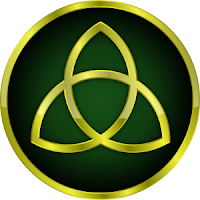Rev. 20:12 ... :I saw the dead, the great and the small, standing before the throne, and books were opened; and another book was opened, which is the book of life; and the dead were judged from the things which were written in the books, according to their deeds.”
The prevailing view of history among educated people in ancient times was what is called the circu-lar view. It was believed that all events have their place on a gigantic chronological circle, or wheel, which irresistibly turns on an axis. One complete revolution is an eon. On the next turn all the events of the previous one are duplicated, so that history literally repeats itself. Biblical thought differs radically from this view, for it presents what is called the linear view of history. According to it, history has a distinct beginning point: "In the beginning God created the heavens and the earth," (Gen. 1:1). Then time follows a forward course to another distinct point where it shall end. This terminal point is the subject of the text above.
When Paul visited Athens, he spoke on Mars Hill to an assembly of intelligent Grecians, most of whom probably held the circular view of history. After speaking about the deception of worshipping idols, he then proclaimed, "God is now declaring to men that all people everywhere should repent, because He has fixed a day in which He will judge the world in righteousness through a Man whom He has appointed, having furnished proof to all men by raising Him from the dead,“ (Acts 17:30-31). The apostle was informing these intellectuals that history is irresistibly moving toward a grand conclusion. He emphasized that the authentic God is in control of the process, having Himself appointed "the day" when The End shall come. On that day, says Paul, God will judge the world by the "Man whom He has appointed," meaning Jesus Christ. The canon of judgment will be "righteousness," which has been perfectly demonstrated in the human sphere in Jesus' life.
During His earthly sojourn Jesus often spoke of the end of time and the great judgment. After Paul, other New Testament writers emphasized this same event. The description by John in Revelation 20 is the last reference to it in the Bible. It was revealed to John in a vision, a sort of preview of that tremen-dous scene. He first saw "a great white throne" occupied by God, and before His glorious face "earth and heaven" (the universe) receded into extinction. Then every person who ever lived, "the great and the small," were assembled to stand before God. This presumes, of course, the resurrection of all the dead. (The Athenian philosophers mocked the resurrection when Paul spoke of it. See Acts 17:32 and above.)
Then John saw two "books" opened. One contains God's record of the life of everyone who lived on earth, including a perfect account of every thought, word, and deed. It once seemed incredulous that a single mind, even the mind of God, could have the capacity to store and recall such a vast amount of information. The development of computers to the capacity where they are able to store and retrieve huge quantities of detailed data should diminish our incredulity. The skeptic needs only to think of God's mind as the ultimate computer with infinite storage capacity and perfect retrieval ability. The traditional word to cover this idea is omniscience.
The other book John saw opened was "the book of life," which evidently contains the names of all the redeemed. The first book, (literally "books," plural ), may very well indicate the Bible, the collect-ion of sixty-six books that is the only standard of righteousness by which men shall be judged. It is decreed that "the dead were judged from the things which are written in the books, according to their deeds." Then v.15 concludes, "And if anyone’s name was not found written in the book of life, he was thrown into the lake of fire. "
